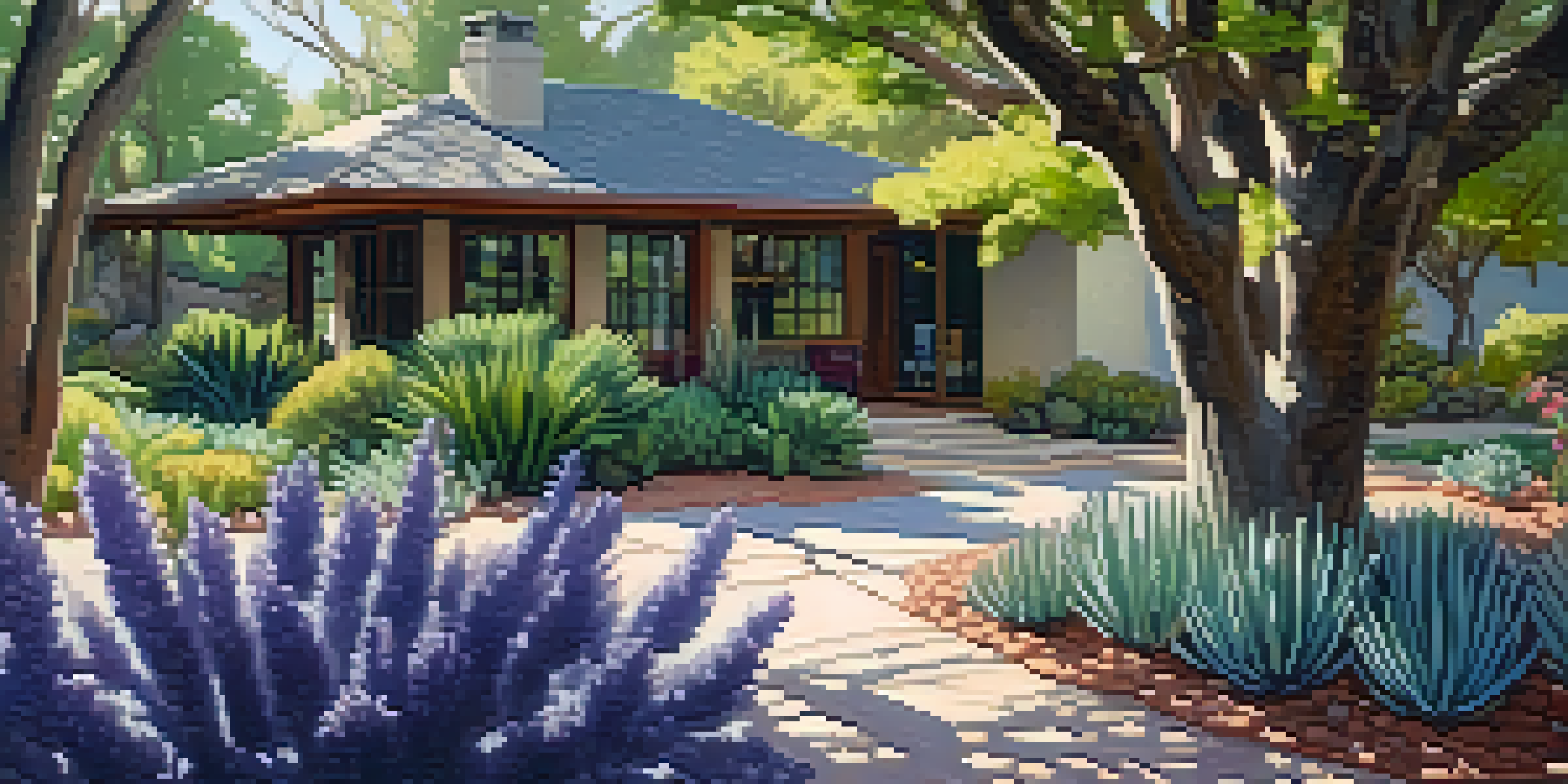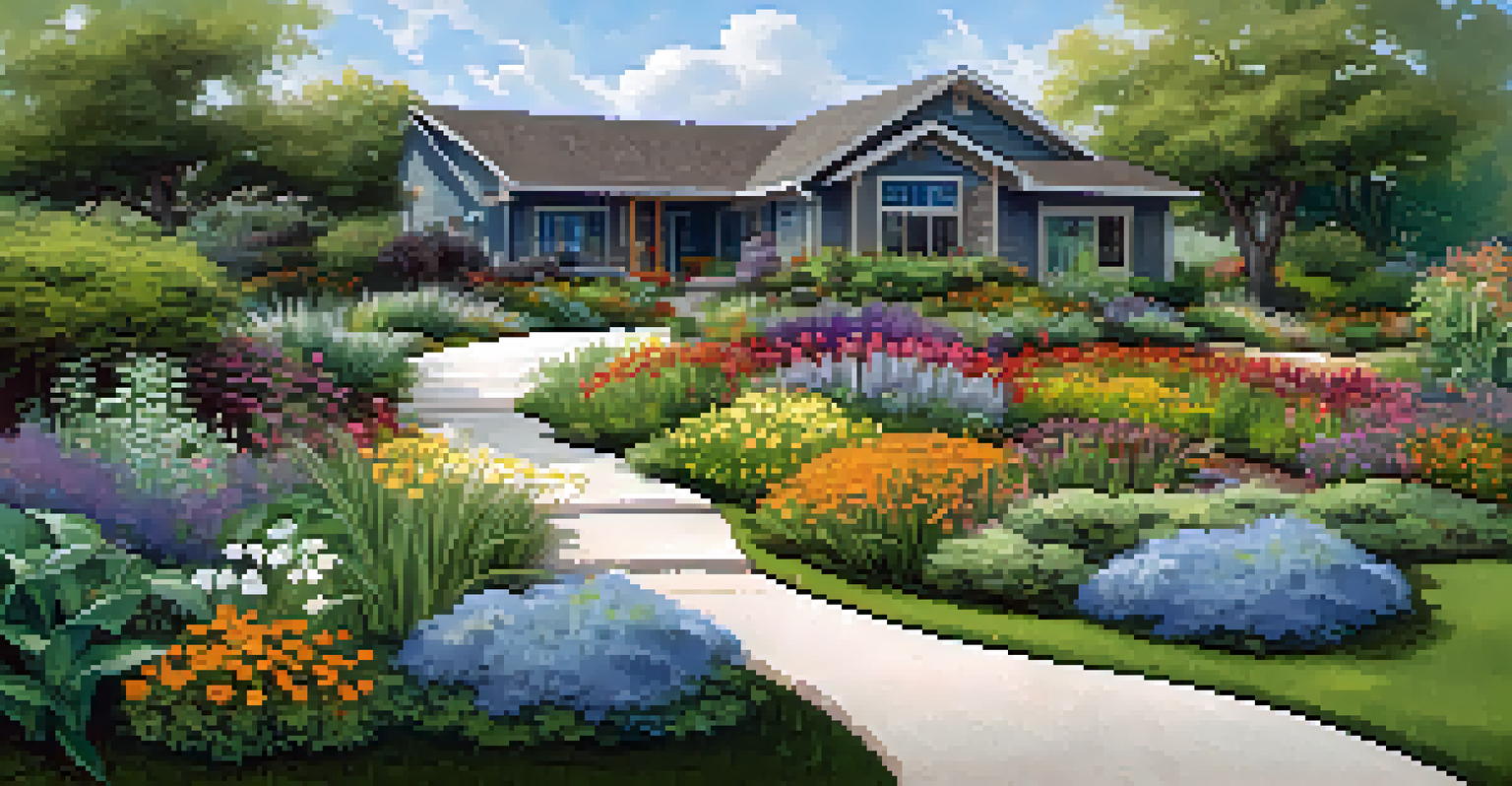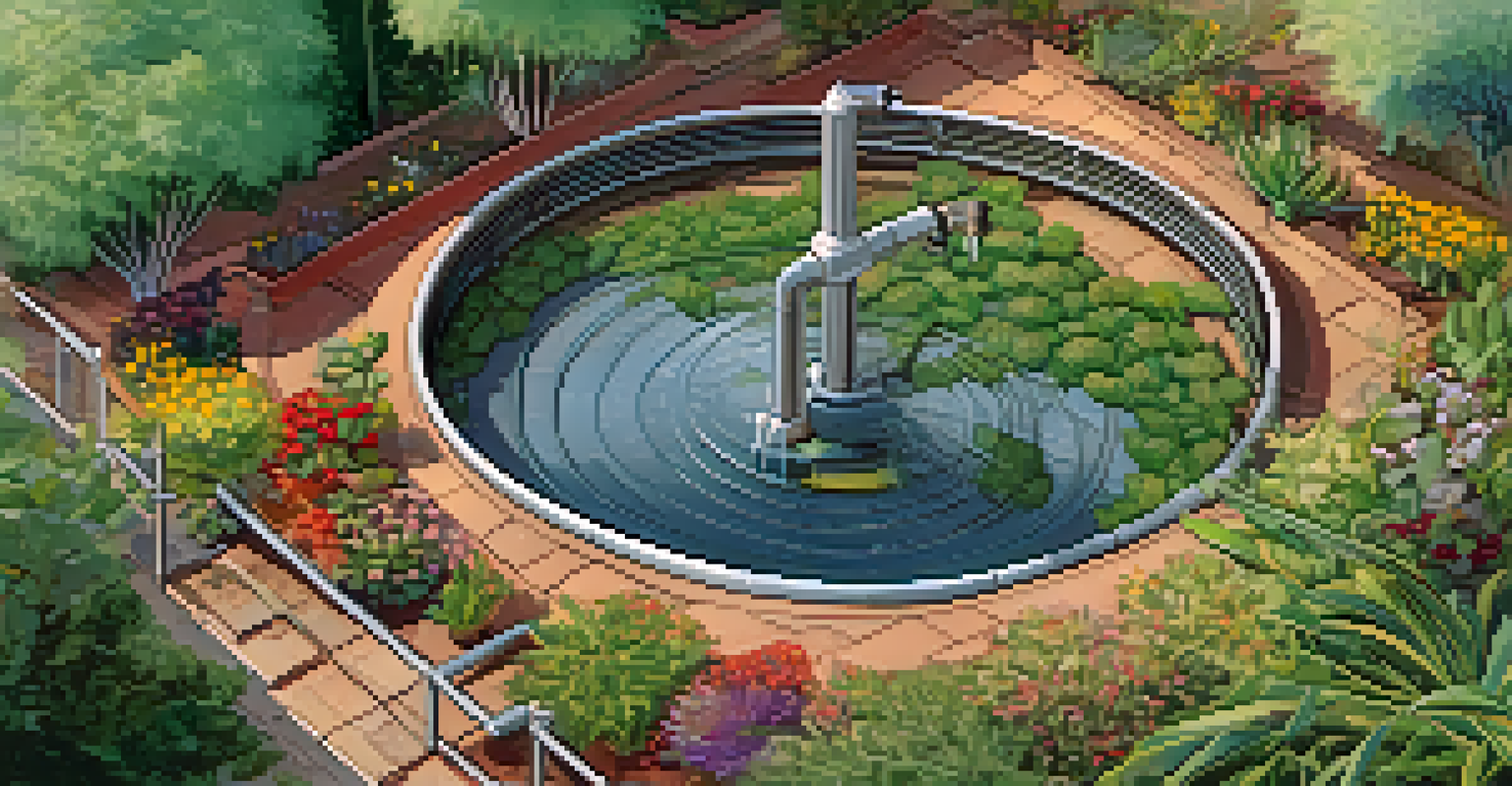How to Save Money with Energy-Efficient Landscaping Ideas

Understanding Energy-Efficient Landscaping Basics
Energy-efficient landscaping is all about designing your outdoor space to reduce energy consumption. It involves strategic planning that takes advantage of natural elements to create energy savings. By using plants, trees, and shrubs wisely, you can minimize heating and cooling costs throughout the year.
The greatest threat to our planet is the belief that someone else will save it.
For instance, planting deciduous trees on the southern side of your home can provide shade in the summer, thus reducing air conditioning needs. In winter, these trees lose their leaves, allowing sunlight to warm your home naturally. This simple approach can lead to significant savings on your energy bills.
Moreover, energy-efficient landscaping can also enhance your home’s aesthetic appeal while contributing to a greener environment. It’s a win-win: you save money while creating a beautiful outdoor space that benefits everyone.
Choose Native Plants to Save Water and Energy
One of the best ways to create an energy-efficient landscape is by choosing native plants. Native plants are adapted to the local climate and soil conditions, which means they require less water and maintenance. By planting them, you can significantly reduce your water bill and reliance on irrigation systems.

For example, if you live in a dry area, consider plants like lavender or succulents that thrive on minimal water. These plants not only save you money on water but also attract local wildlife, promoting biodiversity in your garden. Plus, they create a natural habitat that helps the ecosystem.
Save Energy with Strategic Landscaping
Energy-efficient landscaping reduces energy consumption by using natural elements like trees and shrubs to minimize heating and cooling costs.
Using native plants is not just about saving water; it’s also about reducing the need for chemical fertilizers and pesticides. This results in a healthier environment for you and your community, making it a smart choice for your energy-efficient landscape.
Incorporate Hardscaping for Energy Efficiency
Hardscaping refers to the non-plant elements of your landscape, such as patios, paths, and walls. Incorporating hardscaping can not only enhance your outdoor space but also contribute to energy efficiency. For example, using materials that absorb heat, like stone or concrete, can help regulate temperatures around your home.
Nature does not hurry, yet everything is accomplished.
By strategically placing hardscaping features, you can create windbreaks that reduce energy loss in winter. These barriers can help keep cold winds at bay, allowing your heating system to work less hard. This means lower energy costs and a more comfortable living environment.
Additionally, hardscaping can help manage rainwater runoff, reducing the need for irrigation. By integrating permeable materials, you allow water to seep into the ground, replenishing local aquifers and minimizing water waste.
Use Mulching to Conserve Moisture and Save Money
Mulching is a simple yet effective technique to conserve soil moisture and suppress weeds. By applying a layer of mulch around your plants, you can reduce evaporation and retain water in the soil, which means less frequent watering. This can lead to substantial savings on your water bill.
Organic mulches, such as wood chips or straw, also improve soil health as they decompose over time. This creates a nutrient-rich environment for your plants, reducing the need for chemical fertilizers. A healthy garden not only thrives but also requires less maintenance, saving you time and money.
Choose Native Plants for Efficiency
Opting for native plants can significantly lower water usage and maintenance needs while supporting local biodiversity.
Furthermore, mulching can help regulate soil temperature, protecting roots from extreme heat or cold. This contributes to healthier plants, which in turn, can enhance the overall energy efficiency of your landscape.
Create Shade with Trees and Shrubs for Energy Savings
Strategically placed trees and shrubs can provide essential shade for your home, reducing cooling costs during the hot summer months. By blocking the sun’s rays, these plants can lower indoor temperatures, allowing you to rely less on air conditioning. This not only saves money but also reduces your carbon footprint.
For instance, a well-placed tree can lower your home’s temperature by several degrees. In addition to deciduous trees, consider using evergreen shrubs to create windbreaks that protect your home from cold winter winds. This dual approach can lead to year-round energy savings.
Moreover, shade trees enhance your outdoor space, making it more inviting and enjoyable. Picture relaxing under the cool shade of a tree during a hot day; it’s a beautiful blend of energy efficiency and comfort.
Implement Rain Gardens for Water Management
Rain gardens are designed to capture and absorb rainwater runoff from your roof, driveway, and other surfaces. By creating a designated area for excess water to collect, you can reduce erosion and promote groundwater recharge. This not only helps the environment but also saves you money on water bills.
These gardens typically consist of native plants that thrive in wet conditions, further promoting biodiversity. Additionally, rain gardens reduce the need for irrigation, as they utilize natural rainfall to support plant growth. This is a sustainable approach that aligns with energy-efficient landscaping goals.
Implement Systems for Water Management
Incorporating features like rain gardens and drip irrigation helps manage water efficiently, reducing wastage and irrigation costs.
Installing a rain garden can also enhance the beauty of your landscape. Imagine a vibrant area filled with colorful flowers that not only looks great but also serves a practical purpose in managing water.
Utilize Drip Irrigation for Efficient Water Usage
Drip irrigation is a highly efficient watering system that delivers water directly to the base of plants, minimizing waste. Unlike traditional sprinklers that disperse water over a large area, drip irrigation ensures that every drop counts. This method can significantly reduce your water consumption, leading to lower utility bills.
By using a drip system, you can also target specific plants, providing them with the right amount of moisture they need to thrive. This tailored approach prevents overwatering and encourages deep root growth, making your plants more resilient. In turn, healthy plants can better withstand drought conditions, further saving water.

Additionally, installing a drip irrigation system can save you time and effort in maintaining your landscape. With automated timers, you can set watering schedules that fit your needs, allowing you to enjoy your outdoor space without constant upkeep.